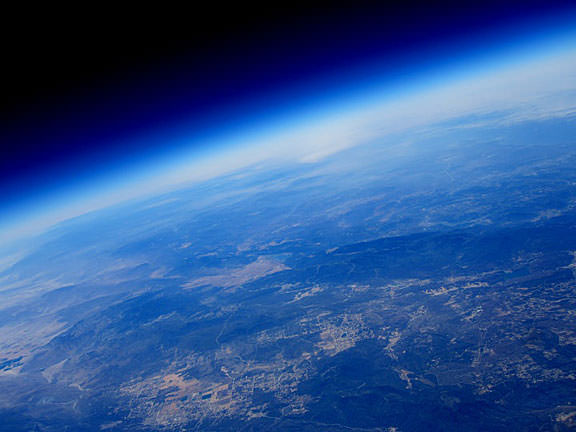[/caption]
From a Challenger Center press release:
If all goes according to plan, a balloon with a student-oriented payload will photograph Space Shuttle Discovery as it climbs into space from an altitude of 100,000 feet. There will also be live streaming video from the balloon itself during the mission - sent back by two regular smartphones running Google's Android operating system.
Co-sponsored by Challenger Center for Space Science Education, this mission is one in a series of flights conducted by Quest for Stars, a California-based non-profit educational organization that uses off-the-shelf hardware and a little ingenuity to allow students to place experiments at the edge of space at exceptionally low cost.
Quest for Stars and Challenger Center for Space Science Education have now joined together to promote the use of these low cost delivery systems. This mission will be the first of what is hoped to be many future collaborations.
A helium-filled balloon carrying the "Robonaut-1" payload (not related to the Robonaut-2 that is launching on board Discovery) will be launched from a location in Florida some distance away from Kennedy Space Center. The time and location of launch will be determined by weather conditions. With a currently planned STS-133 launch time of 4:50 p.m. EST, the balloon will be launched between 3:00 - 3:50 p.m. EST so as to be in position for Discovery's supersonic transit of the stratosphere. If there is a delay in the launch of Discovery, the team is ready to try again - several times - on subsequent days.
The balloon will rise at a rate of 800-1,000 feet per minute to an altitude of approximately 100,000 feet. After accomplishing its mission, the payload will be released and descend by parachute. After the payload descends for 15-30 minutes, a trained recovery team will retrieve the payload and download its data and imagery.
Onboard Robonaut-1 is a HD Camera Phone Satellite (PHONESAT) that will attempt to capture images of Space Shuttle Discovery as it leaves Earth for space. Multiple cameras and an on-board computer system will ensure that Discovery launch images will be captured during its ascent. Some of those photos will include logos for Quest For Stars, STS-133, Challenger Center, and Motorola. In addition, the payload contains a Motorola i290 mobile phone and a Garmin eTrex GPS system that is connected to a ham radio transmitter. The payload is designed to have multiple means of communication for backup purposes.
Live video of mission activities will also be streamed during the mission. This webcast can be watched at http://www.ustream.tv/channel/chasing-discovery, http://www.challenger.org/live, and at http://onorbit.com/suborbital.
Live video from the Robonaut-1 itself during flight will be available at http://qik.com/robonaut-1.
Updates during the mission including live tracking information during ascent and descent can be obtained by following
http://twitter.com/questforstars
or on Facebook at
http://tinyurl.com/4hu4337
.
See more information and images at
OnOrbit.com
 Universe Today
Universe Today
